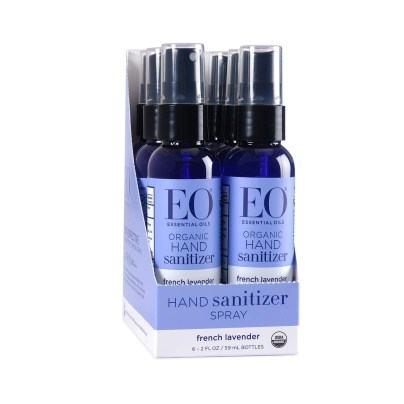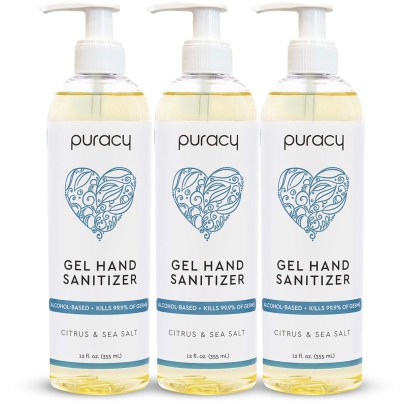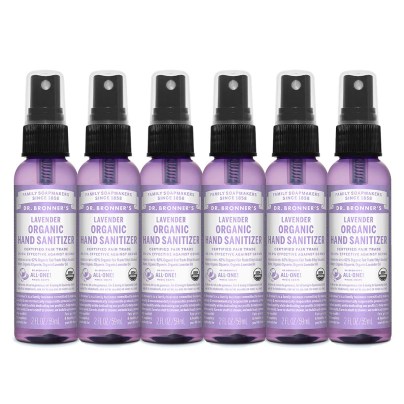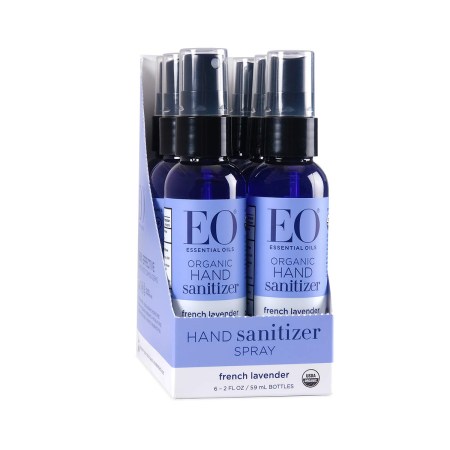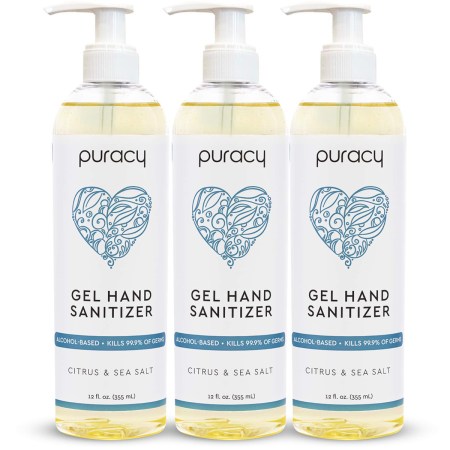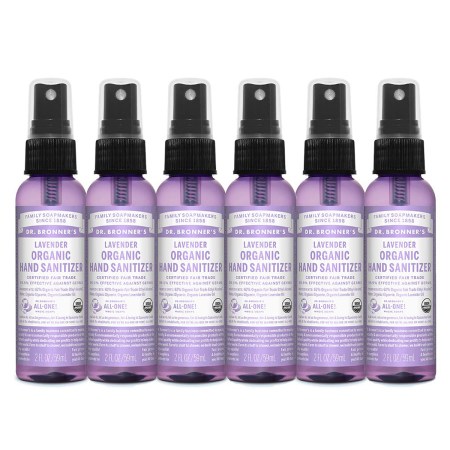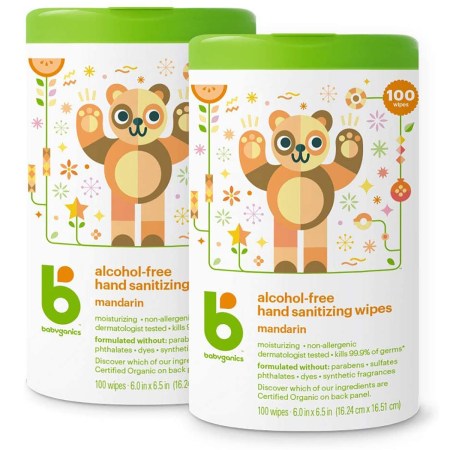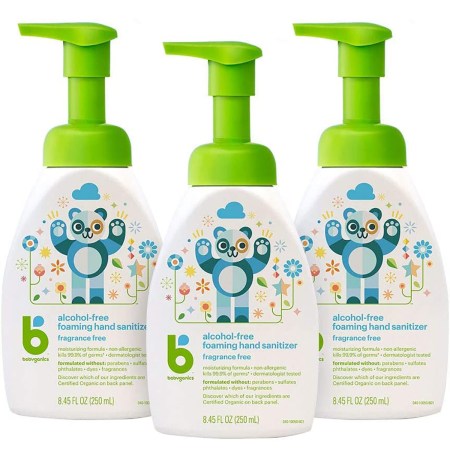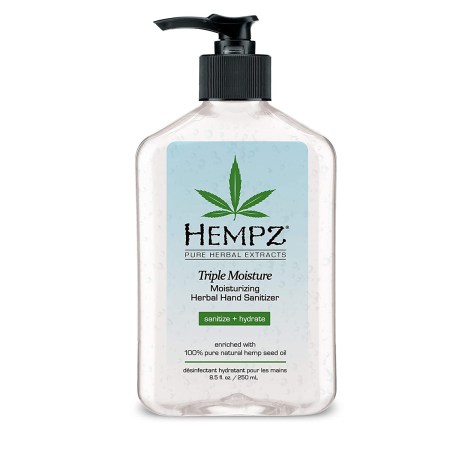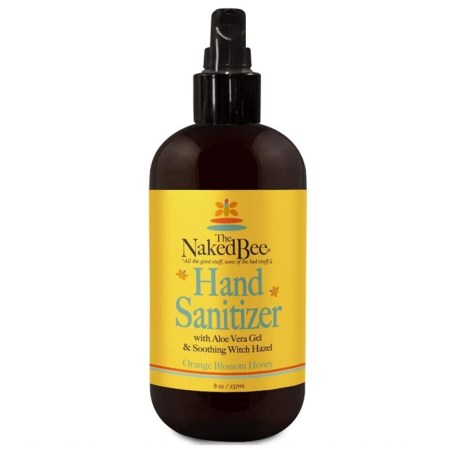We may earn revenue from the products available on this page and participate in affiliate programs. Learn More ›
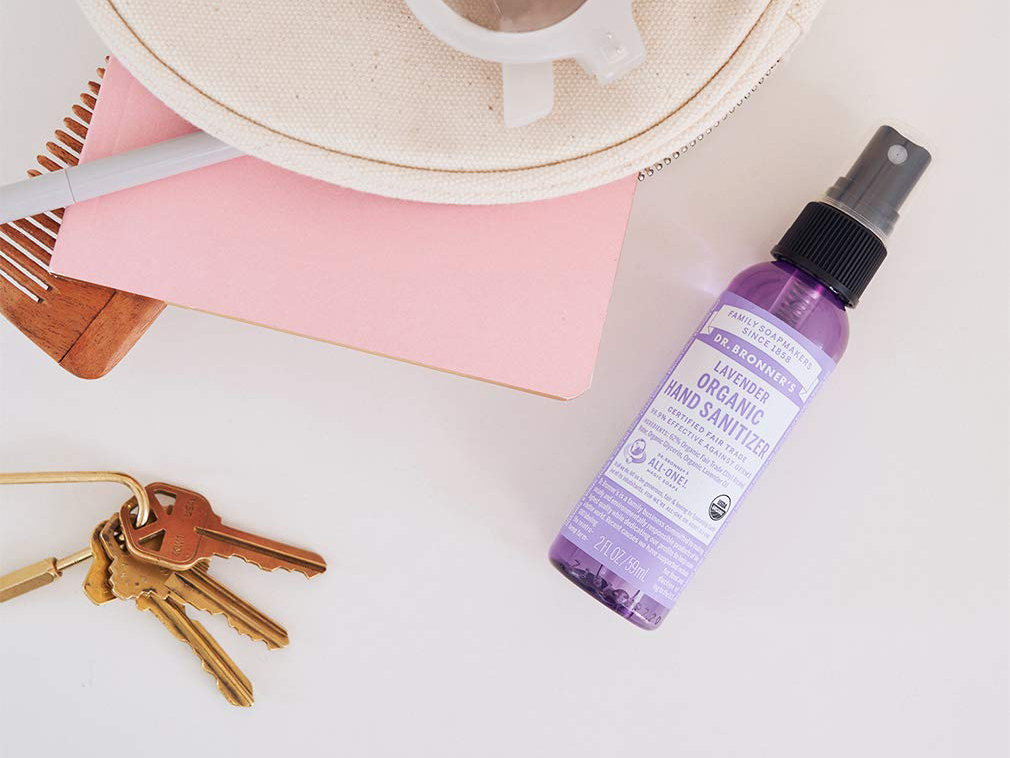
Hand sanitizer helps kill germs when water and soap are not readily available. However, when using a product over and over throughout the day, it’s important to be sure of the ingredients. The best natural hand sanitizers are those that kill germs while moisturizing the skin and leaving no chemical residue behind. The following list includes a variety of natural hand sanitizers that do the job well and are kind to the skin and the environment. Read on to discover some of the best natural hand sanitizers.
- BEST OVERALL: EO Organic Hand Sanitizer Spray: French Lavender
- BEST BANG FOR THE BUCK: Puracy Hand Sanitizer Gel Set (3-Pack)
- ECO-FRIENDLY PICK: Dr. Bronner’s – Organic Hand Sanitizer Spray (6-Pack)
- BEST WIPES: Babyganics Alcohol-Free Hand Sanitizer Wipes Mandarin
- BEST FOAMING: Babyganics Foaming Pump Hand Sanitizer Unscented
- BEST HYDRATING: Hempz Triple Moisture Herbal Moisturizing Sanitizer
- HONORABLE MENTION: The Naked Bee Hand Sanitizer – Orange Blossom Honey
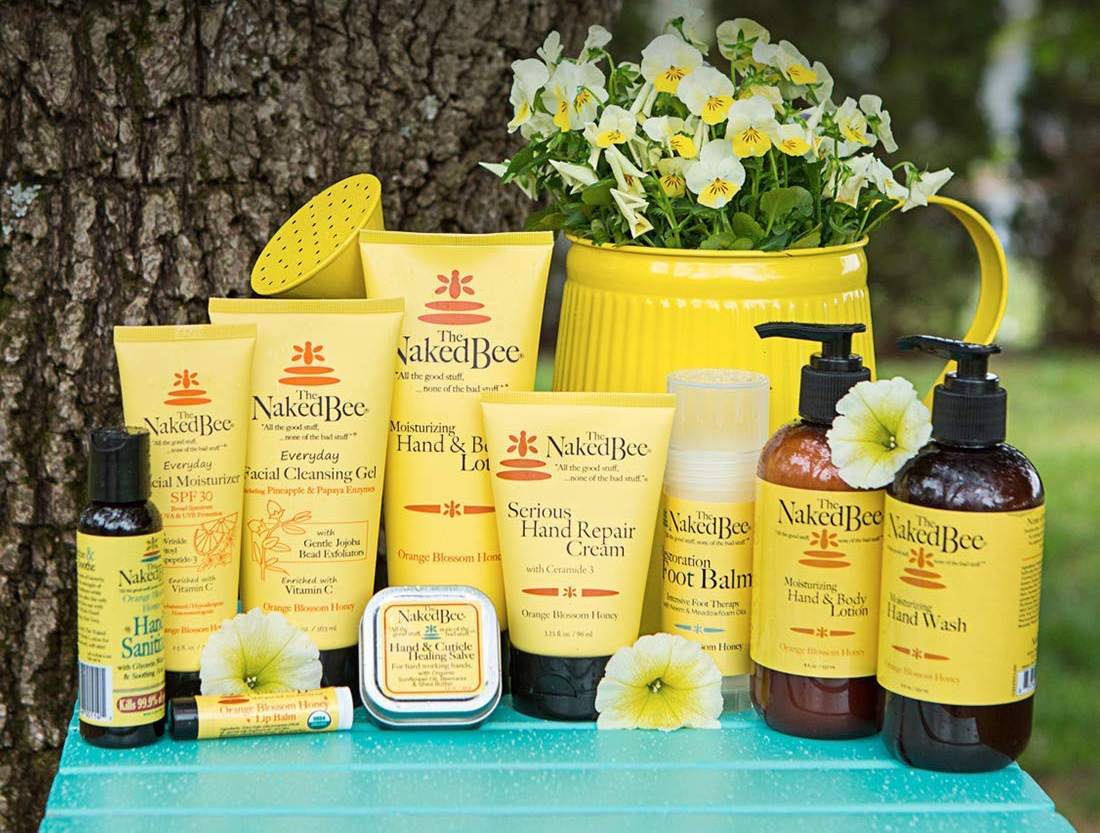
What to Consider When Choosing the Best Natural Hand Sanitizer
Numerous factors come into play when considering which hand sanitizer to purchase. What delivery system is best for your needs? Does the sanitizer have effective ingredients? What does it do to the environment, or to your skin? What does it smell like? This guide outlines these features and provides specific product options to consider.
Type
Just as with regular hand sanitizers, the best natural hand sanitizers come in several different forms. The most common is a gel, which can be dispensed by opening a flip-top cap and squeezing the bottle or by pumping it out. The spray version is a bit thinner to disperse easily through a nozzle. Foam is thick and “sticks” to hands with no drips. Finally, also available are wipes saturated with hand sanitizer solution.
Ingredients
The primary ingredient in most hand sanitizers is alcohol, a substance effective at killing bacteria and viruses. Some sanitizers rely on another germ killer, benzalkonium chloride, rather than alcohol. In addition to the active ingredient, other elements in the mix include water to dilute, scents to enhance the experience, and moisturizing ingredients to combat the drying effects of alcohol. The ingredients in a natural hand sanitizer should be clear on the label or packaging. Here are more details about each ingredient:
- Alcohol. According to the Centers for Disease Control and Prevention (CDC), hand sanitizers should contain between 60 and 95 percent alcohol to be effective against most germs. Look for alcohol, sometimes called “ethanol” on the ingredients list, in the proper concentrations.
- Benzalkonium chloride. This is an organic salt with antimicrobial properties that is often used in cosmetics and first aid products. Look for concentrations of between 0.1 to 0.13 percent.
- Water. This dilutes the solution to the proper alcohol content.
- Essential oils. Hand sanitizers are available in a wide variety of scents, such as lavender, citrus, rose, peppermint, and many more. In the best natural hand sanitizers, these scents come from essential oils derived from plants.
- Skin softeners. Alcohol can be harsh on the skin. To combat that problem, many natural hand sanitizers will also include aloe, vitamin E, vegetable-based glycerin, or other hand softeners to help ensure the skin stays hydrated and supple.
Natural vs. Organic
When looking at hand sanitizers, you might notice some manufacturers call their products “natural” while others use the word “organic.” Some might even point out their product is USDA Certified Organic, which means the product meets certain standards established by the government.
On the other hand, there is no governmental regulation for “natural” products. It’s commonly accepted, however, that products labeled as all-natural shouldn’t contain added color, artificial fragrance, or any other synthetic substances. As always, check the label to determine ingredients, and look up the companies online to learn more about them before purchasing a product.
Scent
The best natural hand sanitizers don’t use artificial fragrances. Instead, they use essential oils to provide a pleasant aroma. Essential oils, usually derived from plants, can run the gamut from soft and sweet scents like lavender to stronger scents, like cedar.
Some companies layer the scents, resulting in a nuanced olfactory experience; this works much like a perfume, which has top, middle, and base notes. Keep in mind that one manufacturer’s “citrus” may be stronger or weaker than another brand’s. Users may need to test different products to find the citrus scent that’s just right for them.
Skin Type
Many natural hand sanitizers are hypoallergenic, meaning they are ideal for those who have sensitive skin. By eliminating synthetic ingredients, natural hand sanitizers are less likely to cause an allergic reaction. Those with dry or sensitive skin should carefully check the label to ensure the ingredients will be good at combating those problems.
Environmental Impact
Many companies that create natural hand sanitizer are committed to all-natural products throughout their product lines. That means they will use sustainable ingredients, those that are created or harvested with fair trade practices, and ingredients that are safe for the environment. Some companies actually own the land on which their ingredients are grown, and thus can ensure they are organic.
The packaging matters, too—look for packaging that is made of recyclable material or can be recycled when the product is empty. For even more eco-friendliness, look for products that allow you to refill the original packaging, thus cutting down on the plastics in the recycle streams.
Our Top Picks
The best natural hand sanitizers are safe and effective, containing no artificial ingredients. They are also crafted with environmental concerns in mind. Here are some to consider.
Best Overall
EO Organic Hand Sanitizer Spray: French Lavender
See ItUsing ethanol sourced from non-GMO sugarcane, this spray from EO contains 62 percent of the germ-killing ingredient. This product contains no parabens, phthalates, dyes, artificial colors, or artificial fragrances. It’s also free of gluten and propylene glycol. As ethanol can dry out the skin, this sanitizer also contains aloe and vegetable glycerin to combat the dryness. This USDA-certified organic and cruelty-free sanitizer is available in lavender, peppermint, or sweet orange fragrances, all scented with essential oils.
Available as a pack of six 2-ounce bottles, this natural hand sanitizer spray slips easily into a pocket or a purse for a quick spritz while the user is out and about.
Best Bang For the Buck
Puracy Hand Sanitizer Gel Set (3-Pack)
See ItWhile this sanitizer from Puracy contains 70 percent alcohol, it also contains aloe vera to ensure skin hydration even with dozens of uses throughout the day.
Free of dyes, sulfates, perfumes, triclosan (an antibacterial whose safe use is questionable to some consumers) or animal byproducts, this hypoallergenic formula instead uses vegan, gluten-free, and cruelty-free ingredients, and the sanitizer itself is never tested on animals. The layered essential oils in the sanitizer create a pleasant aromatherapy experience with every use.
The 12-ounce bottles with a handy pump work well for the home or the office. The bottle is recyclable, as are the refill pouches.
Eco-Friendly Pick
Dr. Bronner's – Organic Hand Sanitizer Spray (6-Pack)
See ItWith only four ingredients, this lavender-scented hand sanitizer from Dr. Bronner’s uses only organic products from fair-trade suppliers. These six 2-ounce spray bottles are filled with 62 percent organic ethyl alcohol, glycerin, and lavender oil, mixed with water. Vegan, GMO-free, and USDA-certified organic, these products aren’t tested on animals.
The convenient spray bottles are small enough to carry around, gentle enough to use on kids, and ideal for uses beyond hand sanitizing, such as cleaning smartphone screens, airplane seats and trays, and other areas where germs might linger. Also available in peppermint.
Best Wipes
Babyganics Alcohol-Free Hand Sanitizer Wipes Mandarin
See ItGentle enough for everyday use on babies, these alcohol-free wipes from Babyganics offer a fresh citrus scent. The active ingredient is benzalkonium chloride, which is approved by the CDC for use as an antimicrobial that helps eliminate germs. These wipes have no parabens, phthalates, sulfates, dyes, or artificial fragrances. They also contain no soaps, so there is none of that sticky leftover residue often found with conventional hand wipes.
These wipes are dermatologist tested to ensure non-allergenic safety and are never tested on animals. With 100 wipes to a package, these wipes come in a round plastic dispenser and both the wipes and the container are recyclable. These wipes also work well for cleaning surfaces, such as stroller handles or airplane armrests.
Best Foaming
Babyganics Foaming Pump Hand Sanitizer Unscented
See ItAvailable in cupcake scent or fragrance-free, this foaming pump hand sanitizer from Babyganics contains no parabens, sulfates, phthalates, dyes, or artificial fragrances. The alcohol-free formula contains the antimicrobial benzalkonium chloride, which kills 99.9 percent of germs.
The moisturizing foam is easy to dispense and it clings to the hands, keeping more of the sanitizing solution right where it’s needed. This product comes in a three-pack of 8.45-ounce bottles, just the right size to drop into a diaper bag for on-the-go sanitizing. The containers are recyclable.
Best Hydrating
Hempz Triple Moisture Herbal Moisturizing Sanitizer
See ItThe star ingredient of this sanitizer is hemp seed oil, which helps relieve the itchiness and dryness that come with using a product containing 63 percent alcohol. Completing the moisturizing trifecta are coconut oil and avocado oil. Apple extract contains antioxidants and vitamins for the skin, and vitamin C helps protect the skin from everyday pollutants.
This herbal hand sanitizer contains no parabens, THC (the psychoactive substance in cannabis), or gluten, is 100 percent vegan, and formulated with the sweet smelling combo of grapefruit and peach. Choose from a 2.2-ounce, an 8.5-ounce, or a 17-ounce bottle.
Honorable Mention
The Naked Bee Hand Sanitizer – Orange Blossom Honey
See ItThe gift of bees becomes a gift to users’ hands as the moisturizing properties of honey work to offset the drying effects of the 62 percent ethyl alcohol contained in this sanitizer. Other ingredients include aloe vera, witch hazel, seaweed extracts, and green tea extracts. Essential oils lend the sanitizer a pleasant orange scent.
This product contains no parabens, propylene glycol, gluten, dyes, pigments, mineral oil, EDTA, or phthalate fragrance. The Naked Bee has a commitment of no cruelty to animals, and thus never tests the product on them. The 8-ounce pump bottle is a convenient size for the home or the office.
FAQs About Natural Hand Sanitizers
Now that you’ve reviewed these top picks for the best natural hand sanitizer, you may have a few other concerns. Here are the answers to the most frequently asked questions.
Q. How effective is natural hand sanitizer?
As long as a hand sanitizer has between 60 and 95 percent alcohol or between 0.1 and 0.13 percent benzalkonium chloride content, it provides some peace of mind against germs. If choosing a natural hand sanitizer with little or no alcohol, always use it in conjunction with proper hand washing.
Q. What fragrance is used in hand sanitizers?
Though many hand sanitizers use artificial fragrances, the best natural hand sanitizers use essential oils to keep hands smelling fresh.
Q. What ingredients should you avoid in hand sanitizer?
When seeking out a natural hand sanitizer, avoid ingredients like artificial fragrances, phthalates, parabens, chlorine, formaldehyde, and petroleum chemicals. Always carefully check the label and look up any ingredients that can’t be readily identified.
